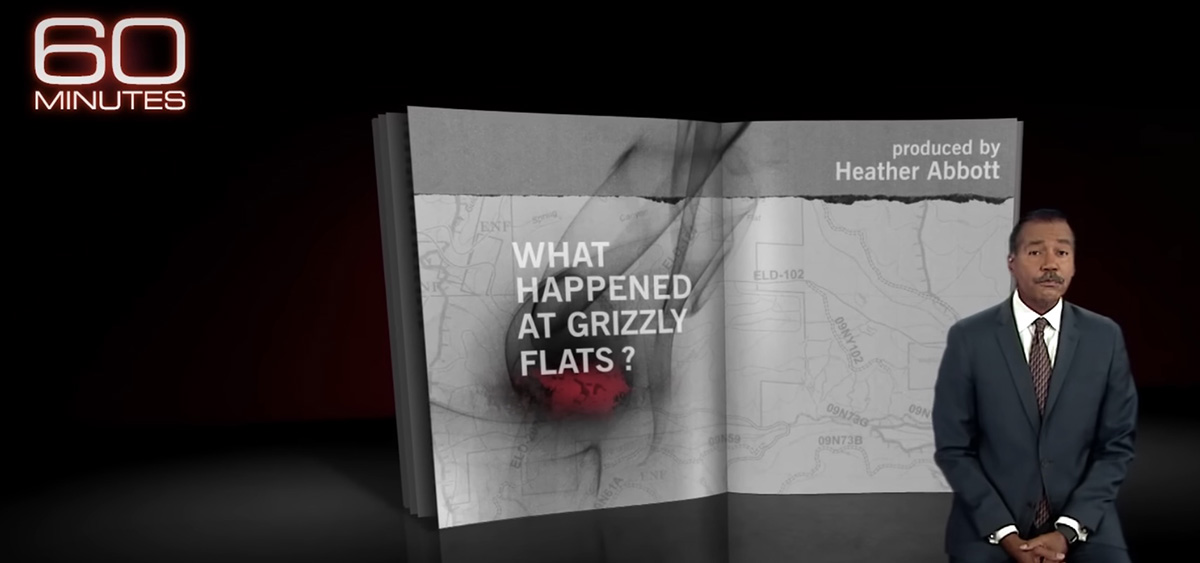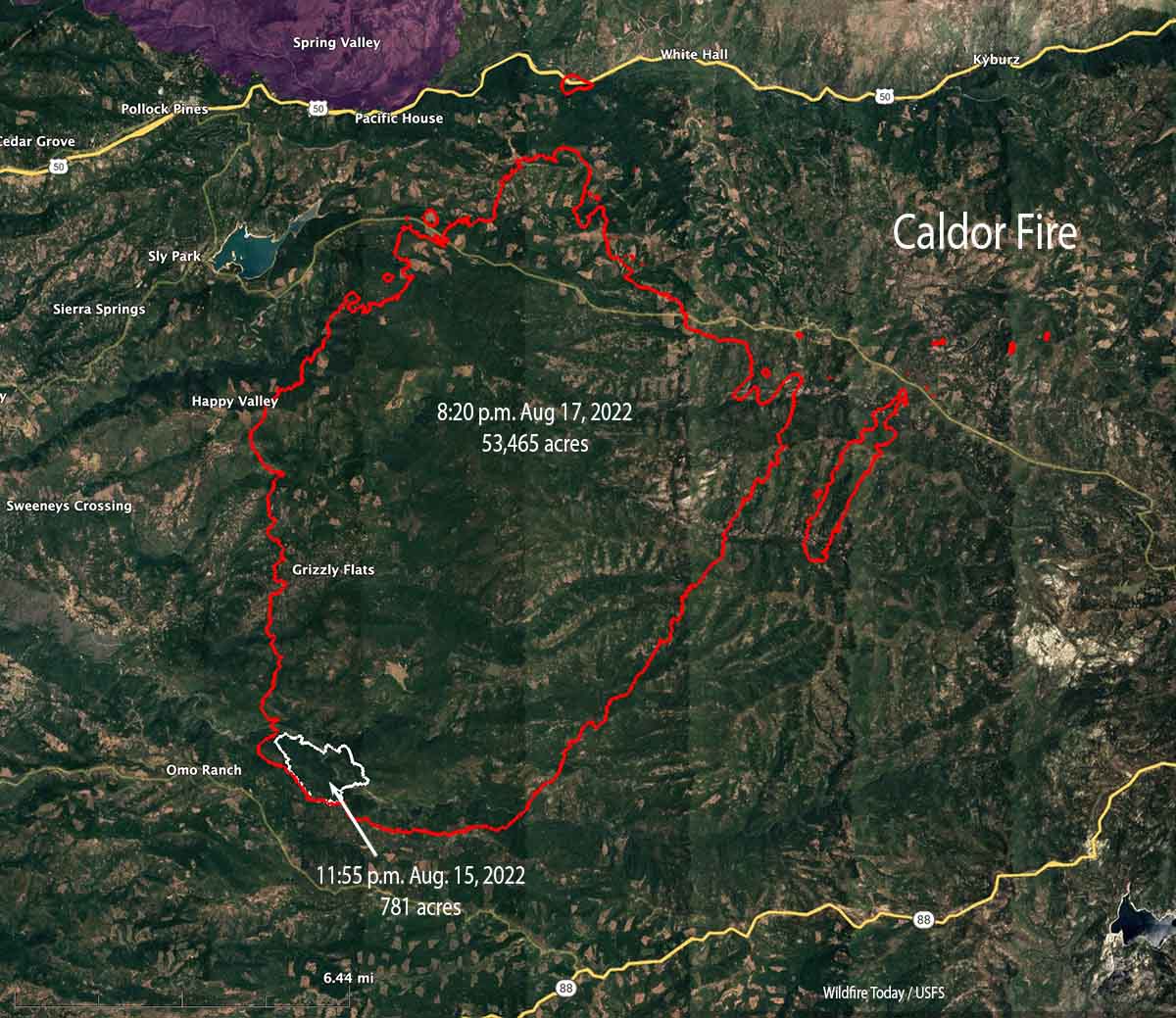
Last year’s Caldor Fire and the community that was heavily damaged by it, Grizzly Flats, has been in the news recently. The latest is a piece aired on CBS’ 60 Minutes yesterday (see video below) about the fire southwest of Lake Tahoe, California. On August 16 Cap Radio wrote about the fuel treatment program the US Forest Service planned to conduct around the town, but barely started. Then on September 26 and 27 National Public Radio published articles about the failed project and difficulties in conducting prescribed fires.
The 13-minute piece on 60 Minutes concentrated on the initial attack of the fire, which was first reported at about 7 p.m. on August 14. One of the first challenges was gaining access, complicated by a washed out road and others that had not been maintained. According to a dispatch log the Incident Commander ordered everyone off the fire at 1:42 a.m., about seven hours after it started. The reason stated in the log was for “accountability.” 60 Minutes said the Forest Service told them it was for the safety of the firefighters. Later on day 2, according to 60 Minutes, the agency “dismissed a half dozen CAL FIRE engines and crews, letting most of them go before their replacements arrived.”
As you can see on the map below, about 29 hours after it started the fire was mapped at 781 acres. After another 44 hours it had burned through Grizzly Flats, growing to more than 55,000 acres.

Our take
I strongly believe in aggressive initial attack “with overwhelming force using both ground and air resources, arriving within the first 10 to 30 minutes when possible.” But it is difficult to criticize, especially a year later, an Incident Commander’s decision to pull everyone off a fire due to concerns about safety. Obviously the burning conditions were in favor of the fire that first night, not the firefighters. In 44 hours it grew from 781 to 53,465 acres while spotting more than a mile ahead according to mapping data from infrared aircraft.
If the Forest Service had completed the huge fuel treatment project they had promised around Grizzly Flats, that does not automatically mean no structures would have been destroyed in the community. Would the treatment have been a mile wide, reducing the number of burning embers landing in the town? Probably not. And it only takes one — landing in a leafy gutter, on a deck, on wooden steps, in a vent, on firewood, or dead grass near a structure and the home can be destroyed. When one home ignites, it becomes another ember generator, showering the rest of the community with ignition sources, resulting in the fire growing exponentially.
In September of 2021 Jack Cohen and Dave Strohmaier wrote about the Home Ignition Zone on Wildfire Today:
“Surprisingly, research has shown that home ignitions during extreme wildfires result from conditions local to a home. A home’s ignition vulnerabilities in relation to nearby burning materials within 100 feet principally determine home ignitions. This area of a home and its immediate surroundings is called the home ignition zone (HIZ). Typically, lofted burning embers initiate ignitions within the HIZ – to homes directly and nearby flammables leading to homes. Although an intense wildfire can loft firebrands more than one-half mile to start fires, the minuscule local conditions where the burning embers land and accumulate determine ignitions. Importantly, most home destruction during extreme wildfires occurs hours after the wildfire has ceased intense burning near the community; the residential fuels – homes, other structures, and vegetation – continue fire spread within the community.”











